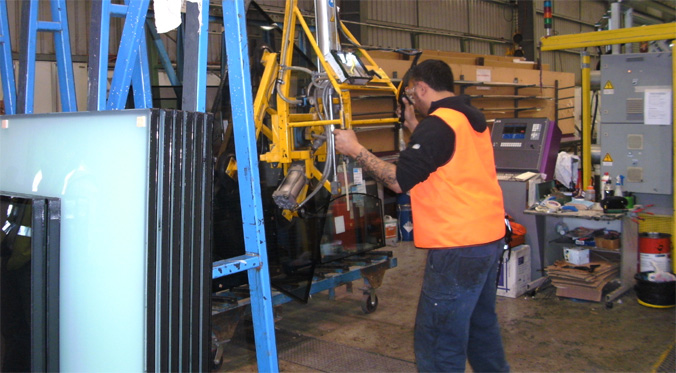Paarhammer will be closing at 12pm Tuesday the 23rd of December 2025 and we will reopen on Monday the 12th of January 2026. We would like to wish all our clients and suppliers a happy and safe holiday period.
Click here to view our latest blog
Glass Matters Explained

Glass is an important factor for the performance of windows and doors. Here are some terms and explanations and how glass can be used:
Annealed Glass
the common flat glass often used in double glazing. It tends to break into large jagged shards.
Toughened Glass
annealed glass is heated to above 600 °C and the surface then rapidly cooled, resulting in increased resistance to breakage. If it does break it breaks into small regular, mostly square fragments.
Laminated glass
this is made of two or more layers of glass with an interlayer bonded in between, providing safety and security. In a breakage the glass is held together by the interlayer. Colouring, sound dampening, resistance to fire or ultra violet filtering can be incorporated.
Conventional single glazing
offers little resistance to the passage of heat. Solar radiation that is not reflected or absorbed is transmitted through the glass.
IGU
stand for Insulating Glass Units like double or triple glazing
Double glazing
consists of 2 panes of glass (any glass combination can be used) with sealed spaces of ideally 12 to 16mm in between. This space can be filled with air or an inert gas (like argon).
Triple glazing
has 3 panes of glass (any glass combination can be used) with sealed spaces of ideally 12mm in between each. Some triple glazed windows can have a U-value as low as under 1.0 Parhammer’s best is 0.8 U-value.
Argon gas
has molecules that are larger than air molecules and can therefore provide better insulation properties, increasing efficiency by 7 to 15%. It is colorless, nonflammable and odorless and as such not detectable.
Tinted glass
is the most common type of absorbent glass and comes in a range of colours.
Reflective glazing
maximizes light transmission while reflecting solar radiation and is often used to reduce heat gain especially on western elevations.
Coated glass
surface coatings are applied to achieve low maintenance, scratch resistance, special reflection, transmission or absorption.
Low E glass
(low emissivity) has a metallic or oxide coating which reduces transfer of heat or cold through the glass while still allowing light through. 2 options: Hard coat low-E used on single glazing, has to face the inside, a haze may be visible and special cleaning instructions apply. Soft coat low-E is enclosed in double or triple glazed IGU's and performs at the highest level of energy efficiency.
Sound protection glass
a glass with specially developed interlayer that dampens noise and increases sound insulation performance. This interlayer also increases UV protection and reduces fading.
Available also
Self-cleaning glass, glass which generates energy, nano covered glass, bushfire resistand glass, etc are all special glass options available now.